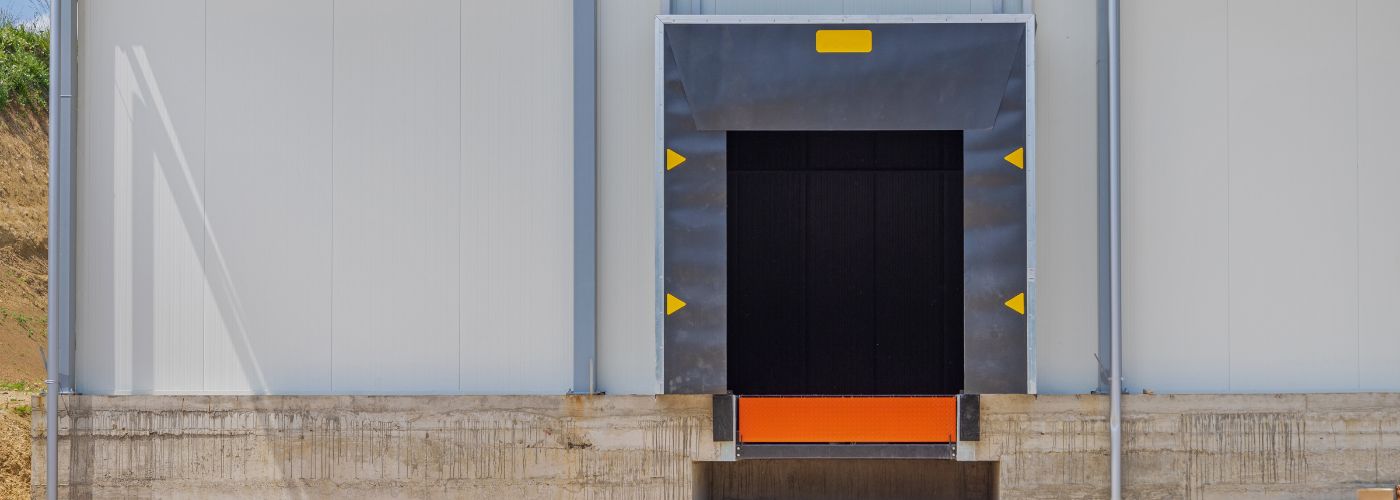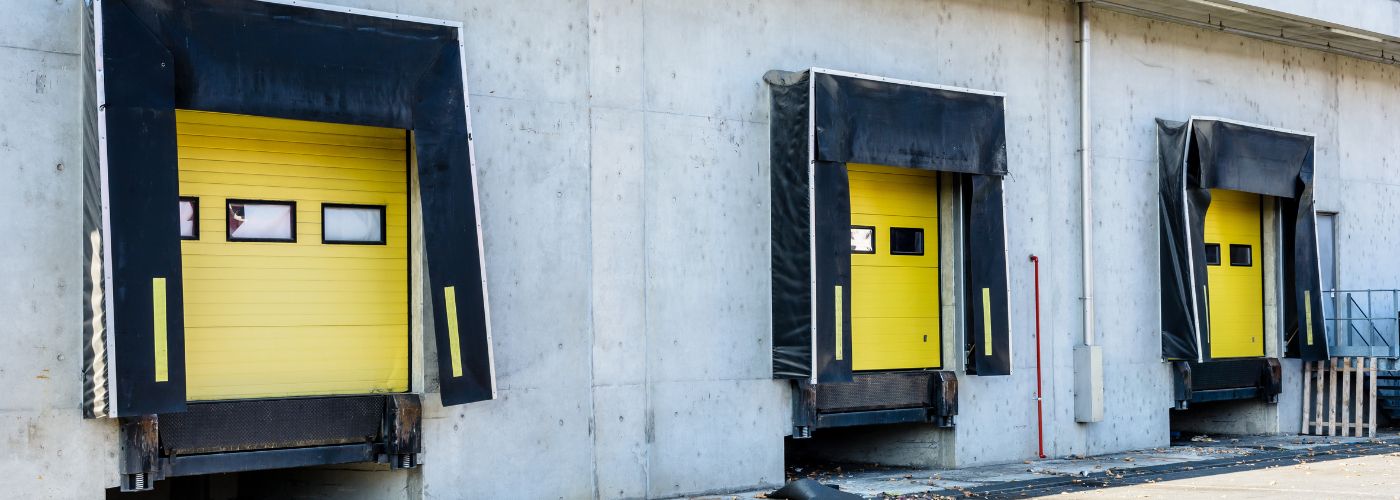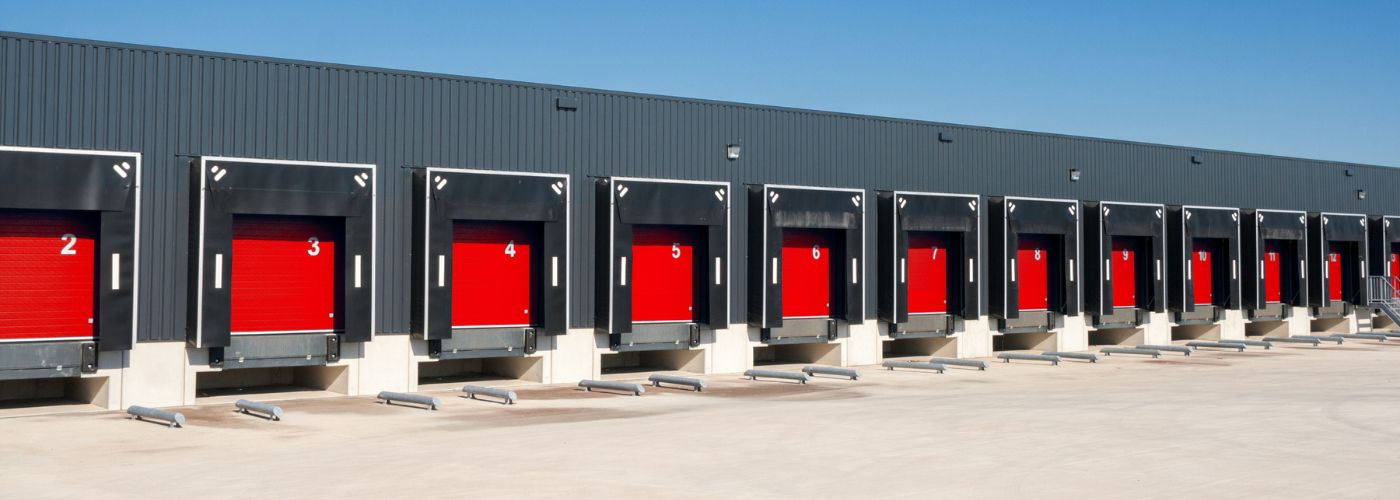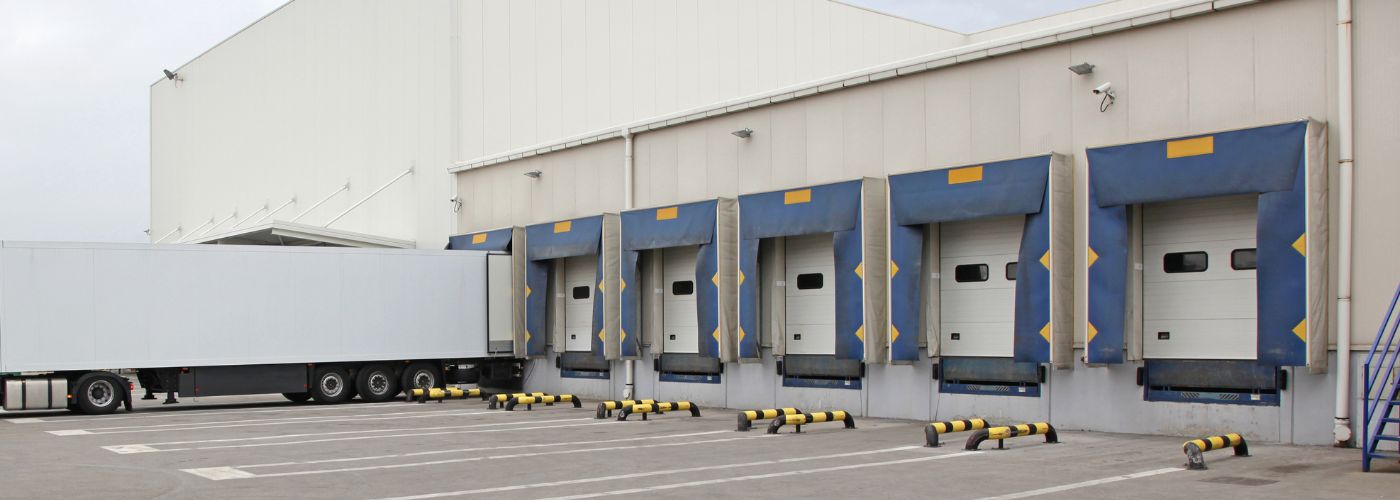In any business, time is money. When it comes to loading and unloading goods, a loading dock seal can save your business both time and money. However, does your business need a loading dock seal? We’ll be going over their function and more in this blog.
What Is A Loading Dock Seal?
A loading dock seal is a device that is placed around the edge of a loading dock door to create a seal. The purpose of the seal is to prevent air from escaping through the gaps around the door, which can help to keep the temperature inside the building consistent and save energy.
Loading dock seals can prevent outside elements like rain, snow, and dust from entering the loading area. Dock seals also may prevent any would-be intruders or pests from entering as well.
There are two main types of loading dock seals: foam and inflatable. Foam seals are made from polyurethane or other similar materials, and they are typically attached to the door frame with adhesive. Inflatable seals are made from PVC or other similar materials, and they are inflated using a pump.
Loading dock seals can be purchased in a variety of sizes to fit different-sized doors, and they can also be customized to fit specific needs.
Do Dock Seals Improve Safety?
Dock seals are an important part of many loading docks and warehouses. They help to improve safety by providing a barrier between the dock and the outside elements. The barrier also prevents any driver or worker from falling in between the cracks of the truck trailer bed and the loading dock. This area is an extremely overlooked spot in many warehouses across the US.
There are three primary types of dock seals: foam, brush, and fabric. Each with its own set of features and benefits.
Foam dock seals are the most common type of seal. They are made of high-density polyethylene foam and help to create a tight seal between the trailer and the loading dock.
Brush dock seals have bristles that protrude from the sides of the seal. These bristles help to create a snug fit between the trailer and the dock.
Fabric dock seals are made of PVC-coated fabric and are designed to create a tight seal between the trailer and the loading dock.
Dock seals are an essential part of any loading operation. They help to protect products from damage, keep out dust and debris, and improve energy efficiency by preventing heat loss.
Be sure to get in touch with a loading dock seal company to help you choose the right dock seal for your company.
How Are Dock Seals Measured?
Dock seals are an important part of any loading dock. They provide a seal between the dock and the trailer, which helps to keep out weather and pests. But how are dock seals measured?
There are three main measurements that are used when measuring dock seals: height, width, and depth. Height is the most important measurement, as it determines how tall the seal is. Width and depth are important as well, but they help to determine how wide and deep the seal is.
To measure a dock seal, first, measure the height of the opening that it will be placed in. Then, measure the width and depth of the opening. Finally, compare these measurements to the specifications for the particular dock seal that you are considering.
How To Install A Loading Dock Seal
A loading dock seal is a system that helps to create a seal between the trailers and the dock while loading and unloading. There are many different types of loading dock equipment, but they all serve the same purpose. Here are some tips on how to install a loading dock seal:
1. Start by measuring the opening of the dock door. This will give you an idea of what size loading dock seal you need to purchase.
2. Once you have the right size, place the seal onto the door opening. Make sure that it is level and centered before proceeding.
3. To secure the seal in place, use heavy-duty tape or screws. Be sure to follow any manufacturer’s instructions that come with your particular product.
4. Install weatherstripping around the perimeter of the door to help create an additional barrier against drafts and pests.



